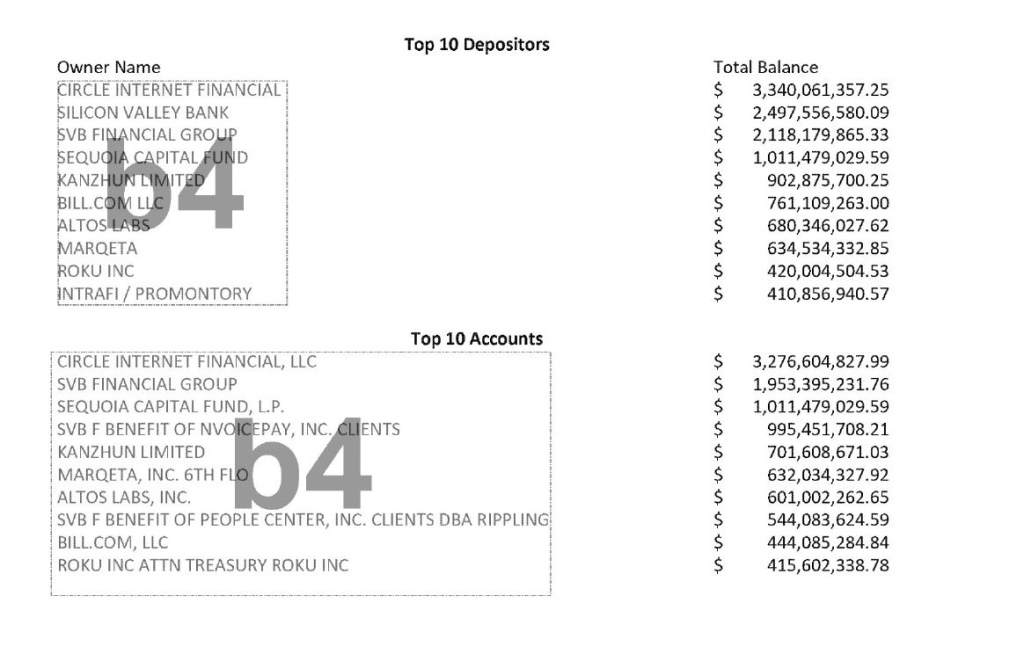Sources:
Steve Mnuchin’s Controversial History With the Foreclosure Crisis
The diplomats behind the Abraham Accords now working as investors
Steven Mnuchin’s interest in TikTok and NYCB echoes his pre-Trump investment playbook

(Bloomberg) — When federal regulators stepped in to backstop all of Silicon Valley Bank’s deposits, they saved thousands of small tech startups and prevented what could have been a catastrophic blow to a sector that relied heavily on the lender.
Big VC, Tech Got Backstop for Billions in Uninsured SVB Deposits (archived)
The systemic threats to the U.S. financial system were not remedied when Congress passed the watered-down Dodd-Frank financial reform legislation in 2010. While that has been evident with each Federal Reserve bailout of the mega banks and their derivative counterparties, the threat has now gained increased urgency for Congress to confront as a result of a new academic study. A team of four highly-credentialed academics at four separate universities present compelling evidence that one of the four largest U.S. banks, with “assets above $1 trillion,” could be at risk of a bank run.
Academic Study Finds that One of the Four Largest U.S. Banks Could Be at Risk of a Bank Run
The twin crashes in US commercial real estate and the US bond market have collided with $9 trillion uninsured deposits in the American banking system. Such deposits can vanish in an afternoon in the cyber age.
Half of America’s banks are potentially insolvent – this is how a credit crunch begins
The US Federal Reserve printed $300 billion in a week to save collapsing banks and bail out Silicon Valley oligarchs. 93% of Silicon Valley Bank’s deposits were uninsured, over the FDIC limit of $250,000, but the government still paid them. 56% of SVB’s loans went to venture capitalist and private equity firms.
US government bailout of Silicon Valley and banks is $300B gift to rich oligarchs
Last Friday, California state regulators closed Silicon Valley Bank and the Federal Deposit Insurance Corporation (FDIC) became the receiver. Its stock price had lost over 80 percent of its market value over the prior year; $150 billion of its $175 billion in deposits were uninsured, either because they exceeded the $250,000 FDIC cap and/or they were foreign deposits. The bank was effectively operating as a Wall Street IPO pipeline in drag as a federally-insured bank. The Federal Home Loan Bank of San Francisco had quietly been bailing it out – to the tune of $15 billion. Oh – and by the way – its primary regulator was the Federal Reserve Bank of San Francisco. And while all of this hubris was occurring, the CEO of Silicon Valley Bank, Gregory Becker, was sitting on the Board of Directors of his regulator, the Federal Reserve Bank of San Francisco.
…
Oh, and by the way, the Fed member banks in each of the 12 Federal Reserve Districts that can choose to be regulated by the Fed, literally own their regulator. That’s right, they own the stock in their regional Fed bank, which is a private institution, unlike the Federal Reserve in Washington, D.C. which is an “independent” federal agency. (See, for example, These Are the Banks that Own the New York Fed and Its Money Button.)
…
Adding to the ongoing arrogance of the Fed, its Chairman, Jerome Powell, released a statement two minutes after the market closed yesterday, stating that “The events surrounding Silicon Valley Bank demand a thorough, transparent, and swift review…” So, once again, it’s decided to investigate itself. The Fed’s Vice Chairman for Supervision, Michael Barr, will oversee the investigation.
Pensions across the globe have lost millions of dollars due to the collapse of Silicon Valley Bank (SVB).
In the wake of SVB’s Friday closure, several pension funds in the U.S. and two overseas have confirmed that they had investments in SVB stock that will likely be at a loss now that the bank has been shut down by federal regulators.
Pensions Lose Millions After Bank Collapse
Ignore GOP hype about the “liberal” tech industry — reckless, entitled libertarianism is what fuels Silicon Valley
Silicon Valley Bank wasn’t “woke”: Tech billionaires are just as bad as Wall Street bros
Related:
Elizabeth Warren: Silicon Valley Bank Is Gone. We Know Who Is Responsible.
As regulators rush through emergency measures to prevent further chaos following the disastrous collapse of Silicon Valley Bank, there’s a point they’re very keen to emphasize: this is not a bailout.
Taxpayers ARE on hook for bank bailout – and could even fund bankers’ bonuses
Related:
Joe Biden stuck around just long enough to lie about who’s on the hook for SVB bailout
Forget cannabis. Here are 2 banking provisions that did make the NDAA.
Some banks have instituted policies making it easier for second-chance workers to get hired. JPMorgan Chase years ago removed all questions about criminal backgrounds from job applications and established a policy center to help former criminals find jobs.
It expanded its effort to help ex-offenders return to the workforce last year, partnering with nonprofits to connect people with arrest or conviction histories to in-demand jobs. CEO Jamie Dimon also agreed to co-chair the Second Chance Business Coalition encompassing 29 member companies.
The bank hired 4,300 people with criminal records last year, Nan Gibson, executive director for public policy and corporate responsibility at the JPMorgan Chase Policy Center, told American Banker. That’s more than double the bank’s 2,100 second-chance hires from 2020.
H/ T: Judge Napolitano
Related:
You must be logged in to post a comment.